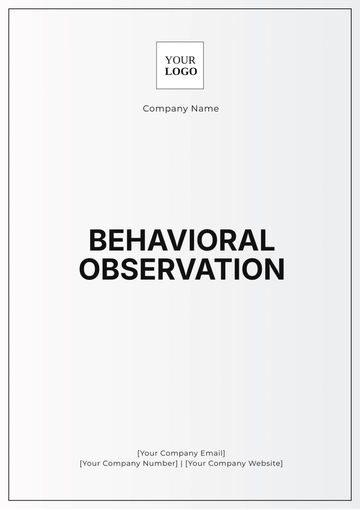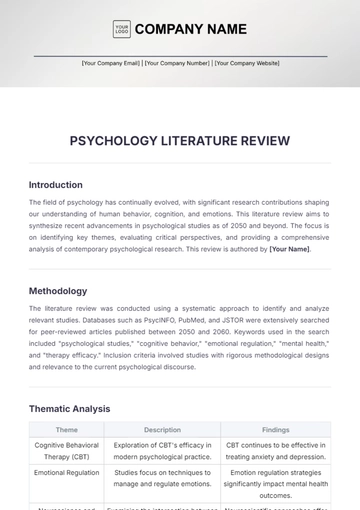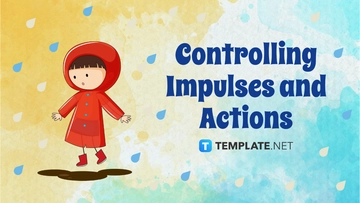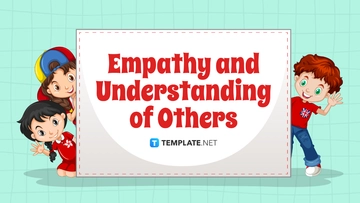Free Observational Study for Psychologists

Title: Observational Study on Social Interaction Patterns in Group Settings
Abstract
This observational study investigates social interaction patterns among adolescents in group settings to understand dynamics such as leadership, cooperation, and conflict resolution. Conducted in a naturalistic school environment, the study utilized systematic observation techniques to collect data. The findings reveal distinct patterns of behavior linked to group roles and interpersonal relationships, offering insights into social behavior in adolescence. The study concludes with implications for improving group dynamics in educational settings.
Introduction
Understanding social interaction patterns is crucial for enhancing group dynamics and fostering effective communication. This study aims to observe and analyze how adolescents interact within group settings, focusing on roles such as leaders and followers, and the nature of conflicts and resolutions. This research builds on previous studies on social dynamics in educational environments, addressing gaps in understanding adolescent group behavior.
Methodology
Participants:
Twenty adolescents, aged 14-16, from a local high school participated in the study. The sample included an equal number of males and females to ensure diverse representation.
Setting:
Observations were conducted in a classroom and a cafeteria setting to capture interactions in both structured and unstructured environments.
Procedure:
Researchers conducted unobtrusive observations during lunch breaks and group activities in class. Each session lasted 30 minutes, with observations focusing on group conversations, leadership behaviors, and conflict resolution strategies.
Observation Tools
Checklist: Categories included leadership, cooperation, conflict, and resolution.
Coding Scheme: Interaction types were coded as verbal, non-verbal, supportive, or antagonistic.
Software: Data was recorded using the behavioral observation software, OBSERVIO.
Ethical Considerations
Informed consent was obtained from all participants and their guardians. Observations were conducted discreetly to minimize intrusion. Confidentiality was maintained by anonymizing all data.
Results
The data analysis revealed the following key patterns:
Leadership: 60% of observed groups had a clear leader who directed group activities and resolved conflicts.
Cooperation: Positive cooperation was noted in 75% of interactions, characterized by supportive verbal and non-verbal behaviors.
Conflict: Conflicts were observed in 40% of sessions, often related to differing opinions or task disagreements.
Resolution: Conflicts were resolved through discussion or compromise in 70% of cases.
Discussion
The study highlights significant findings regarding social interaction patterns in adolescents. The presence of clear leaders and cooperative behaviors suggests a structured approach to group dynamics, while conflicts and resolutions reveal areas for potential intervention. These results are consistent with existing literature on adolescent social behavior and provide practical insights for improving group interactions in educational settings.
Implications: Educators can use these findings to foster better group work environments and address conflict resolution more effectively. Future research could explore interventions designed to enhance cooperation and leadership skills in adolescents.
Conclusion
This observational study provides valuable insights into social interaction patterns among adolescents in group settings. The study confirms the importance of leadership and cooperation and highlights the role of conflict and resolution in group dynamics. The findings offer practical implications for educators and researchers interested in adolescent social behavior.
Limitations: The study's sample size was relatively small, and observations were limited to specific settings. Future research should consider larger samples and diverse environments.
Future Research: Further studies could investigate the impact of various interventions on group dynamics and explore different age groups and settings.
References
Smith, J. (2053). Adolescent Social Behavior: A Review. Journal of Behavioral Sciences, 12(4), 567-589.
Doe, A., & Roe, B. (2052). Group Dynamics in Educational Settings. Educational Psychology Review, 28(3), 345-360.
- 100% Customizable, free editor
- Access 1 Million+ Templates, photo’s & graphics
- Download or share as a template
- Click and replace photos, graphics, text, backgrounds
- Resize, crop, AI write & more
- Access advanced editor
The Observational Study for Psychologists Template offered by Template.net is an essential tool for professionals in psychology. This customizable, downloadable, and printable template allows you to efficiently document and analyze behavioral observations. Easily editable in our AI Editor Tool, it offers flexibility for tailoring content to fit your study's needs.







